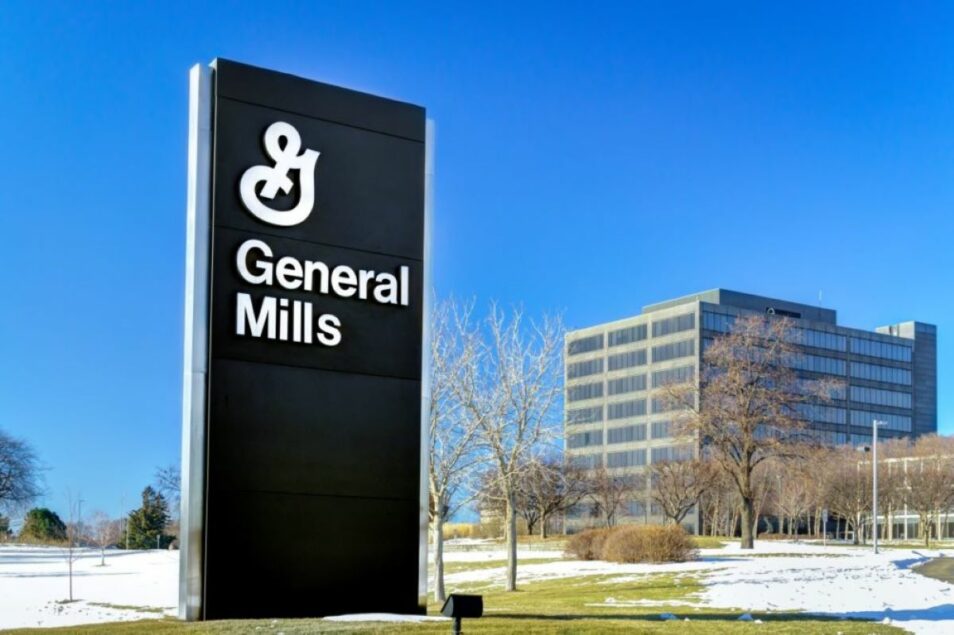ORLANDO, FLA. — General Mills Inc. expects a slowdown in reaping the benefits of its Accelerate growth strategy, top executives said at the Consumer Analyst Group of New York (CAGNY) annual conference in Orlando.
“I’m pleased with how we’ve executed on our Accelerate strategy since its launch five years ago, and I’m proud of the strong financial results we’ve delivered during that time,” Jeffrey Harmening, chairman and chief executive officer of Minneapolis-based General Mills, said on Feb. 18. “Between fiscal 2019 and fiscal 2024, we generated compound annual growth of 5% in organic net sales, 5% in constant currency adjusted operating profit, and 7% in constant currency adjusted diluted EPS, all of which were in line or ahead of our long-term goals.
“That said, evolving consumer behavior in today’s economic environment has resulted in a prolonged period of stabilization following lockdown-driven demand and then inflation-driven pricing,” he noted. “While we drove strong competitiveness during the past five years, it has not met our expectations over the last 18 months. We are fully committed to returning to sales growth, and we will take the actions and make the necessary investments to achieve that goal.”
In its presentation at the event, General Mills forecast organic net sales growth of 2% to 3% under its long-term algorithm, with adjusted operating profit rising by mid-single digits and adjusted diluted earnings per share (EPS) increasing by mid- to high single digits in constant currency.
When reporting fiscal 2025 second-quarter results back in December, the company upheld its full-year organic net sales forecast of flat to up 1% but lowered its guidance for adjusted operating profit, now expected to decrease 2% to 4%, and for adjusted EPS, now projected to decline 1% to 3%.
“The prolonged value-seeking orientation we’ve seen from consumers recently has presented challenges to our ability to deliver organic sales growth in the short term,” said Kofi Bruce, chief financial officer. “And let me be very clear: We are not satisfied with this performance. We are fighting every day to return to the growth we know that this business is capable of, and we have initiatives in flight across the enterprise to reignite top-line growth.”
Later, in response to an analyst question, Bruce acknowledged that the current consumer environment is such that General Mills is “probably not expecting to see us grow in line with our 2% to 3% long-term target, largely because we expect price/mix to remain somewhat muted as a contribution in the near term.”
Harmening told analysts that General Mills’ No. 1 priority is spurring organic sales growth.
“To do that, we’re working to improve our competitiveness by delivering more remarkable experiences that meet evolving consumer needs,” he said.
General Mills’ efforts include increased brand-building, including through media and targeted pricing investments; more product innovation, including several new launches with “potential to be significant growth contributors” in fiscal 2026; more digital investment to build on opportunities created in areas such as data-driven marketing, strategic revenue management and supply chain digitalization; and further efficiency initiatives to aid margin growth.
Currently, General Mills remains “in the early stages” of plans to reignite its North American business, Harmening said. The company’s presentation highlighted advances by its Cheerios, Nature Valley, Old El Paso, Progresso, Totino’s and pet food brands but noted that there’s still work to be done on snacks and the Pillsbury refrigerated dough business.
“Returning North America retail to growth will be critical to our long-term success,” Harmening said. “Our focus in North America retail is on improving the remarkability of our core brands to drive greater household penetration with growing consumer cohorts, ultimately leading to stronger market share and sales growth.”
When one analyst asked why General Mills didn’t provide another update of its fiscal 2025 guidance at the conference, Harmening alluded to impact from the chaotic first weeks of the new presidential administration and said the company’s latest outlook would come with next month’s third-quarter report.
“It’s been a volatile couple of months, I would say, in three main ways,” he said. “One would be Nielsen movement data, and then the second would be on customer orders. And the third would be government, particularly tariffs. As we looked at those three, we wanted to get a few more data points before we either affirmed or redid guidance for the year, and having a few more weeks of Nielsen data under our belts and a little bit more clarity on what’s coming with tariffs and customer orders we thought would be in order.”

